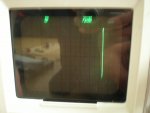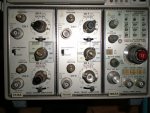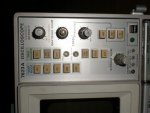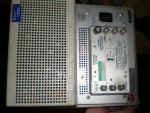SilentScreamer
Senior Member
Hi, I've been given an oscilloscope but I can't seem to get it to work correctly, I have no experience what so ever with scopes so it's probably just me (I hope atleast). I've attached two pictures, one is of the scope in general and the other is a trace of a 12V AC (50Hz) signal (apologies for the reflection, I couldn't take a photo without it). Can anyone suggest what I'm doing wrong? Or is the scope broken (which is a possibility)? I think I have the correct manual here if its of any use.
I know this isn't exactly PICAXE but all the electronics I do is with PICAXE.
Thanks in advance.
EDIT: Removed the second attachment due to the better quality image in post #3.
I know this isn't exactly PICAXE but all the electronics I do is with PICAXE.
Thanks in advance.
EDIT: Removed the second attachment due to the better quality image in post #3.
Attachments
-
574.7 KB Views: 87
Last edited:




